
Powerful
EKKcapcast calculates a wide range of data using advanced techniques and powerful solvers. A complete data set assures you have everything you need to get your casting right the first time.
• Fill Time Prediction
• Pressure Counter Pressure
• Printed Sand Mold
• Complete Cooling Control
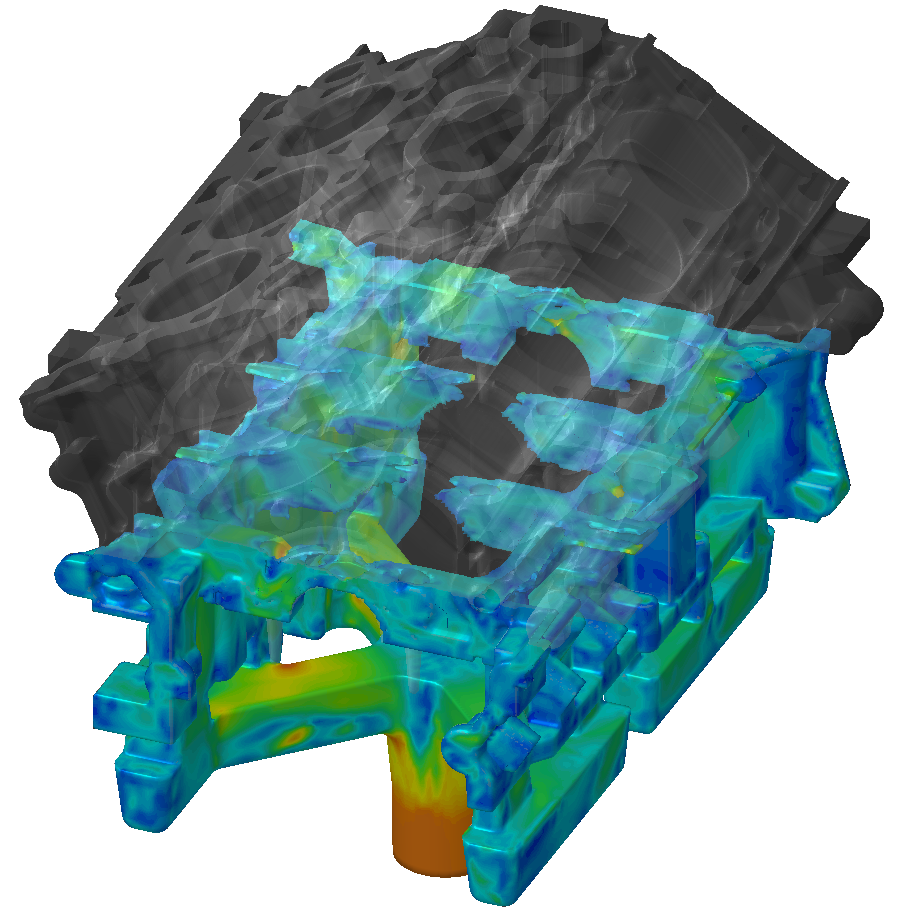

Accurate
The high quality FEM meshes produced by EKKcapcast, coupled with its powerful two-phase flow simulation solvers, result in unprecedented levels of accuracy. Simulation results are consistently verified by real-world castings.
| Data Point | Temperature °C | |
|---|---|---|
| Measured | Simulated | |
| S1 | 488.1 | 494.9 |
| S2 | 522.4 | 511.2 |
| S3 | 452.2 | 452.6 |
| S4 | 491.0 | 502.3 |
| S5 | 504.3 | 505.8 |
| S6 | 436.8 | 436.2 |
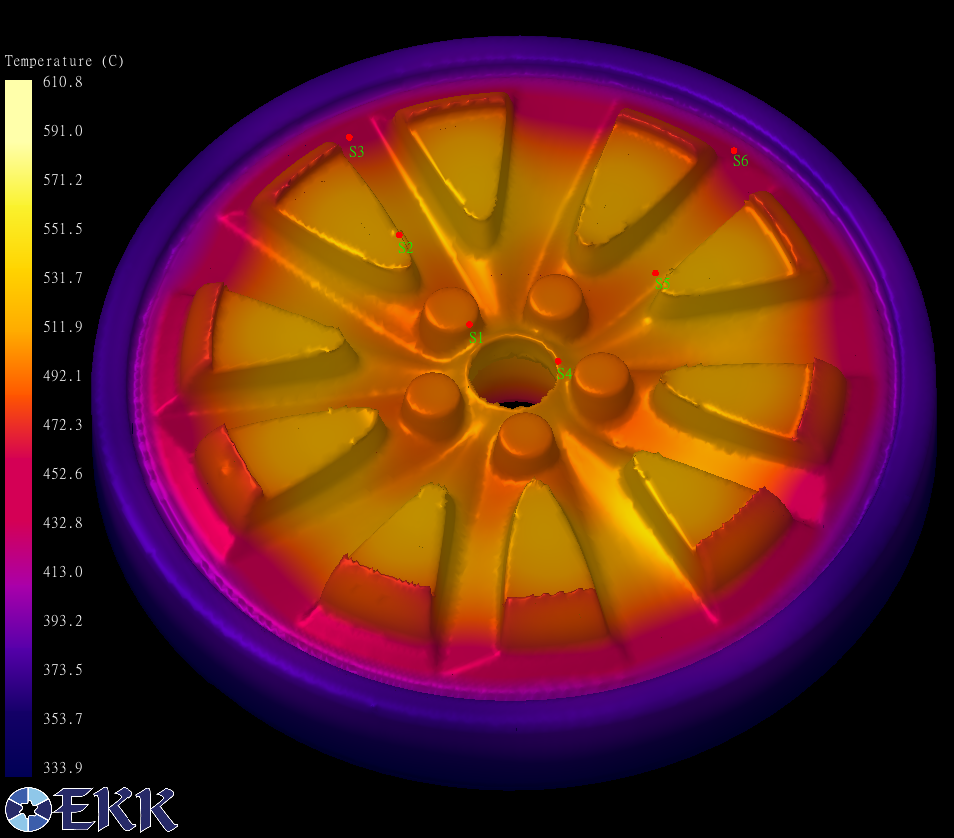
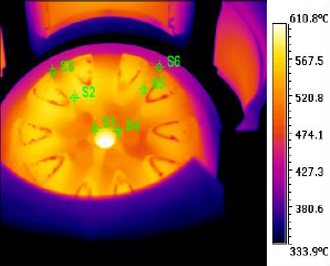

Fluid Flow
In-depth visual analysis of fluid flow patterns and various fluid properties throughout filling is possible. Determine where issues may arise due to insufficient fluid velocities, temperatures, patterns, and more.



Pressure Simulation
An entire suite of simulation methods are available. Accurately model your process with confidence. Input methods range from machine Pressure Curves to Fill Time.

LP Furnace BC
The traditional method for modeling Pressure Curves in Low Pressure simulation assumes that the Pressure can be applied at the bottom of the Sprue instead of to the top of the metal in the furnace, or by substituting it for a Flow Rate.
Recent research indicates that this assumtption is extremely problematic with certain casting geometries. A method has been developed to create and simulate the entire body of furnace metal without incurring exorbitant simulation costs.
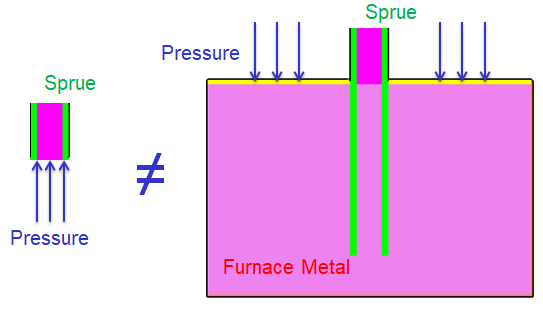


Heat Transfer
EKKcapcast’s thermal analysis module simulates every stage of the casting process. Zero-thickness interface elements connect components to accurately model heat transfer between them. Independent control of time or temperature dependent cooling lines allows for complete synchronization of the system. The ability to analyze casting temperatures, solidification patterns, and thermal effects throughout the entire process is an indispensable tool.

Solidification
Thermal results are used to predict hot-spot locations. Filling defects due to inadequate mold temperature, locations in the mold prone to soldering, as well as casting and mold thermal distortion are also generated.


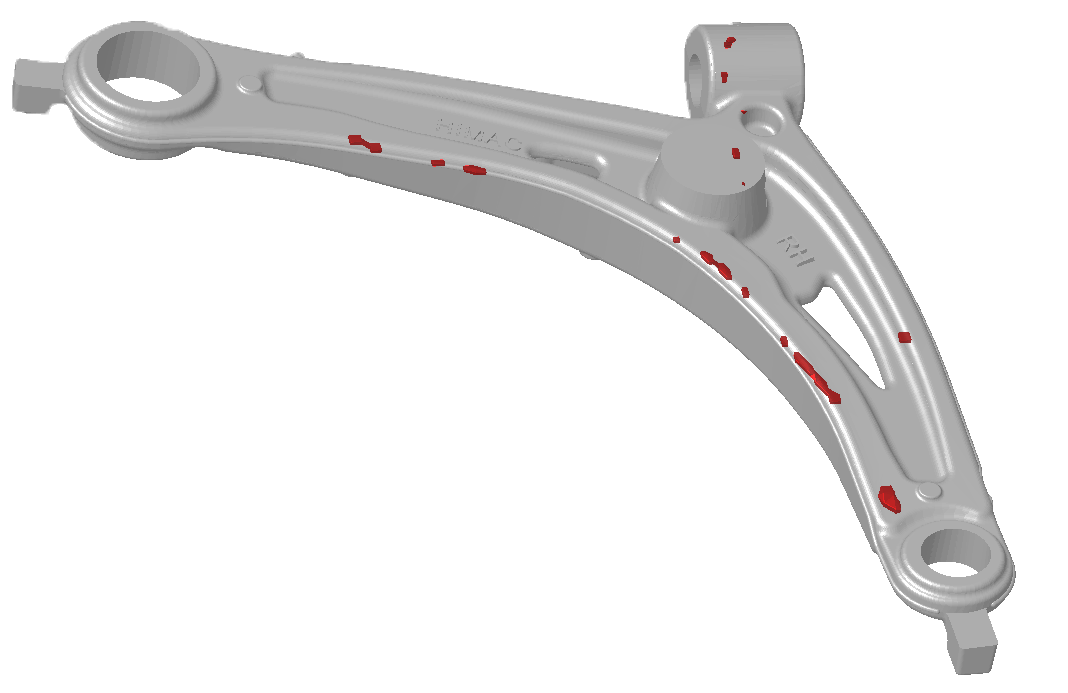
Porosity
Likely locations for problematic porosity formation can be analyzed and predicted by the porosity module. Porosity defects and cooling rates are taken into account by the software to accurately determine mechanical properties.

Stress & Deformation
Mold distorions must be considered for truly accurate thermal analysis. Castings falling out of tolerance, die life and fatigue, as well as cracking due to the existence of porosity can all be predicted with the use of the stress module. You won't even have to re-mesh as our FEM mesh is entirely compatible with Stress Analysis and there is isn't any practical limit for the mesh size.


